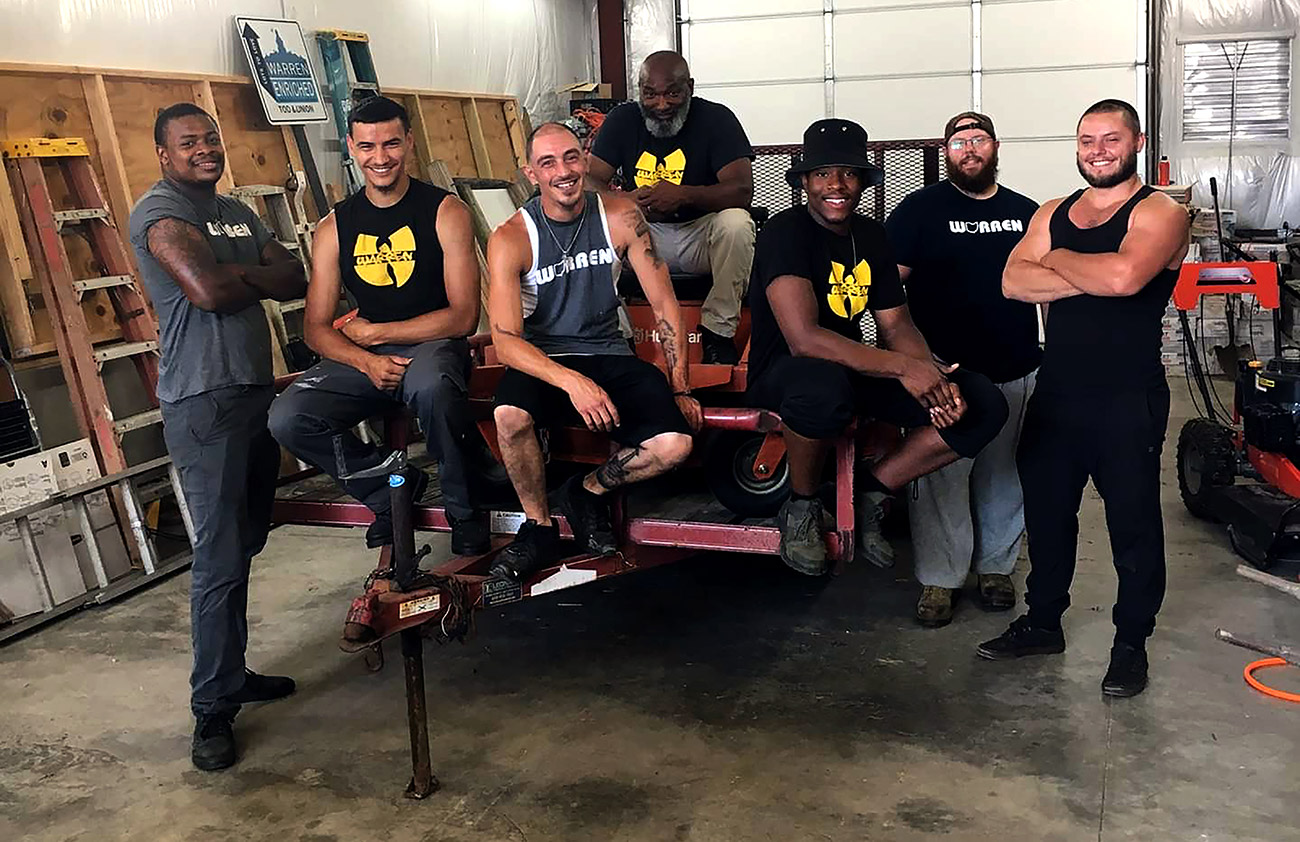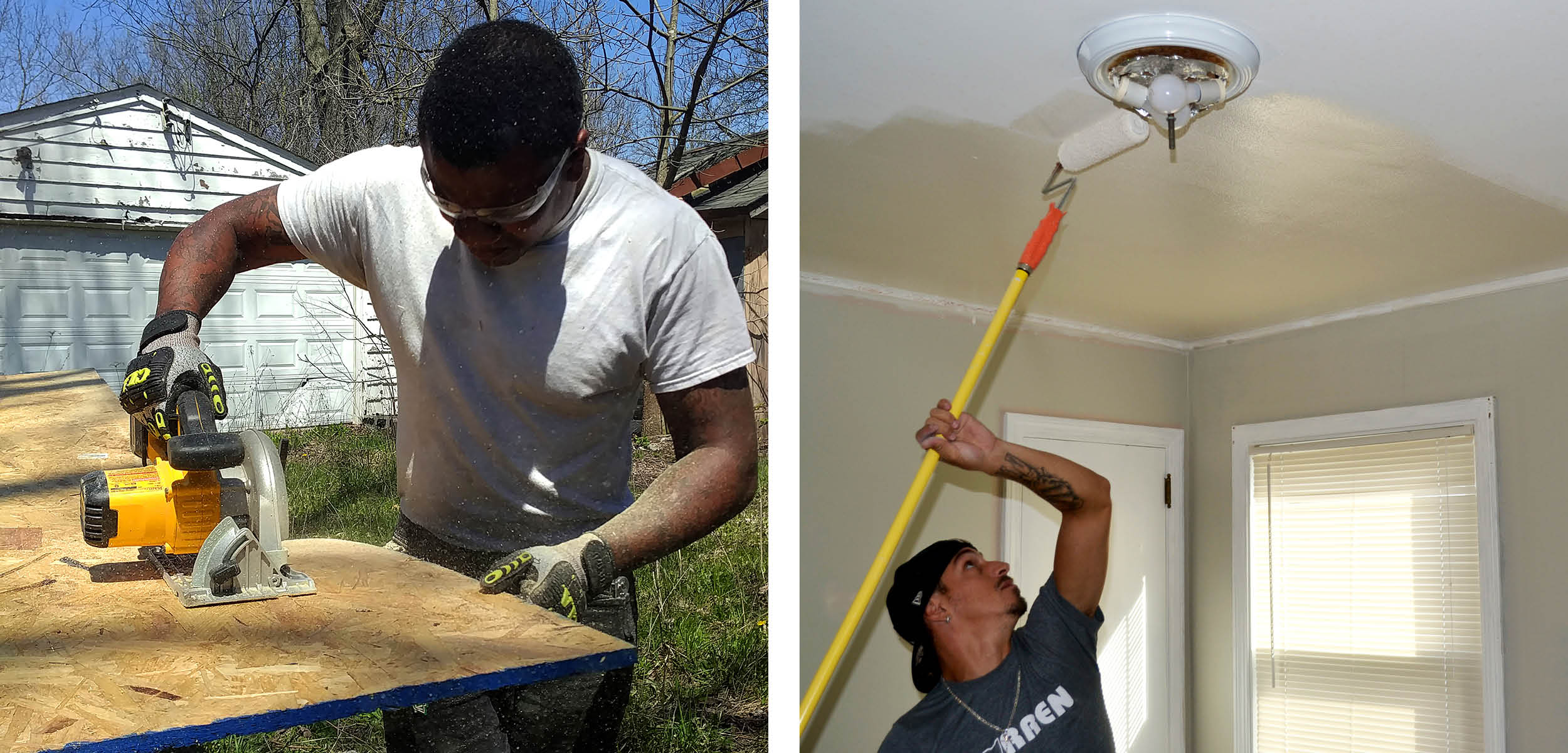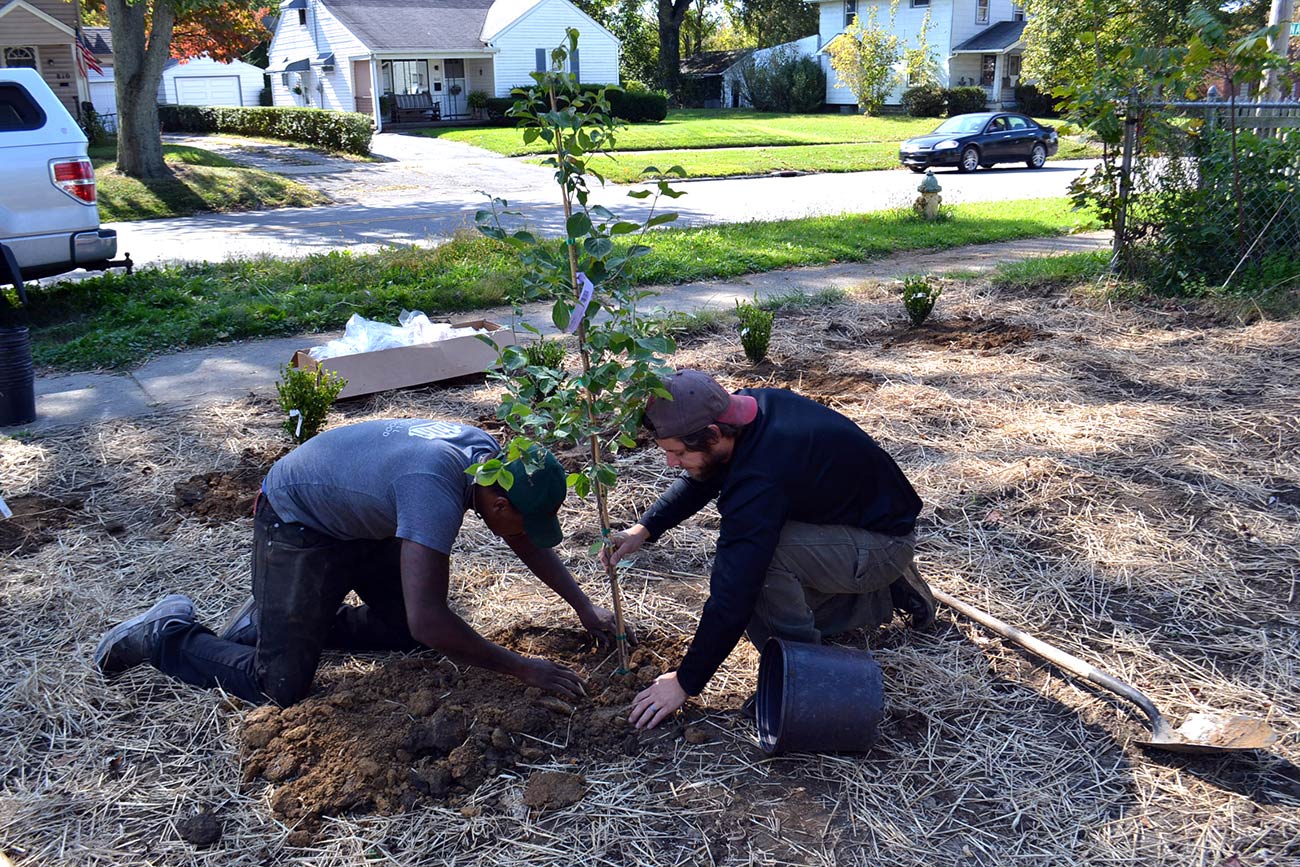For decades, work provided more than income for Mahoning Valley communities: It provided identity. People from the area were proud that its steel helped win World Wars I and II and contributed to the postwar booms. People were proud that the work they did provided a comfortable middle-class lifestyle for their families.
The area is still reeling from the decline of the steel industry that began on September 19th, 1977—Black Monday, as it is known in the region—when Youngstown Sheet and Tube furloughed 5,000 workers. Within a decade of these initial job losses, the Mahoning Valley lost roughly 40,000 jobs and 50,000 people left the area. The losses have only compounded over the following decades, making the Mahoning Valley a symbol of deindustrialization and its associated social challenges.
What was lost was not just jobs, but the opportunity to join the middle class through hard work. A good job in the area now pays $15 an hour, less than half of what it once did, and there are fewer such good jobs. As economic conditions have continued to worsen, the plight of the region is visible, most clearly, in its boarded-up shops; today, there is hardly a fully functioning supermarket within the Youngstown and Warren city limits. Many of the people left in these urban centers are from minority communities, and with population decline in the Valley’s center cities, political power has moved to its suburbs, leading to increased racial inequities.
Yet many in the Mahoning Valley are working on a way forward. For example, the Mahoning Valley has two significant community development corporations, the Trumbull Neighborhood Partnership (TNP) and the Youngstown Neighborhood Development Corporation (YNDC). Both agencies are working to help communities address growing vacancies and ever-diminishing services. The TNP’s Building A Better Warren (BABW) program is one such initiative, providing training and job opportunities for local residents by teaching demolition, renovation, and construction skills while paying a living wage with benefits.
Initiatives like this show a desire in the Valley to create economic opportunities that focus on local needs and are less susceptible to the kinds of large closures and disruptions seen in the steel and car industries. This desire is coupled with an increased interest in collaborative and cooperative economic models such as employee-ownership. What has been lost may not be coming back, but projects like BABW are beginning to show an economic path forward for this community.
In the interview below, we take a closer look at BABW and the future of work prospects in the region. —Quilian Riano, In the Mahoning Valley chief editor
Explore these related features: Hear how the philanthropic sector is working to create an equitable and just economic system for the Mahoning Valley, in an interview with Jennifer Roller, President of the Wean Foundation. Read an essay by Roy Messing from the Kent State University Ohio Employee-Ownership Center describing efforts to create employee-owned cooperatives in the Mahoning Valley in response to the loss of manufacturing jobs.
For over a decade, the Trumbull Neighborhood Partnership (TNP) has served a dual purpose for Warren, OH: It is both the city’s community development corporation and its land bank. In both those capacities TNP is trying to tackle Warren’s challenges: decades of job losses leading to population loss, leading to a diminished tax base, leading to the neglect of infrastructure built for a larger population and economy.
Since its inception, TNP has been dedicated to efforts such as demolishing properties that can no longer be feasibly maintained, renovating housing, and encouraging increased home ownership. Its role in the demolition of property also means that TNP is often tasked with maintaining, finding maintenance partners, or finding new uses for vacant land.
As TNP worked to fulfill its mission, it kept noticing an issue: many of the construction crews it hired did not reflect the demographics of Warren. This led to the creation of Building a Better Warren (BABW), a program that recognizes the need for resident-driven community revitalization. The goal was to create opportunities for community job creation, placing interested residents in full-time positions with benefits while they learn construction and maintenance skills.

Building a Better Warren crew from left: Gary Honeywood, Ethan Dukes, Juan Miranda, Terence Eddington, Chandler Coleman, Matt Hallas, and Jake Carrino. Courtesy of Trumbull Neighborhood Partnership
Quilian Riano interviewed Building a Better Warren crew members Gary Honeywood, Ethan Dukes, Juan Miranda, Matt Hallas, Team Lead Jacob Carrino, and Program Coordinator Landon Kline in 2020.
The following has been edited for length and clarity.
Quilian Riano (QR): Can you please describe Building a Better Warren (BABW)?
Landon Kline (LK): BABW was launched three years ago as a program between the TNP and the Trumbull Land Bank to employ low- and moderate-[income] residents of the Mahoning Valley.
The Trumbull Land Bank works to demolish abandoned structures that have become unsafe, and that leads to a lot of vacant lots. We have four main kinds of projects to support the TNP and land bank efforts. First, one of our main jobs is to mow the lawn and do other basic land maintenance to these vacant properties that are officially part of the Land Bank. Second, we also have a lot of vacant lot projects, mainly to discourage dumping; so we do things like construct fences, plant trees, build gardens, etc. Third, before a house is demolished, our team goes in and salvages furniture, architectural detailing, and other elements (doors, etc.) that can be used in other projects. Finally, we remodel houses that have been deemed safe enough, creating affordable house ownership opportunities for the community.
Gary is one of our most experienced crew members, and he can share what a typical day for the BABW looks like. I say typical, but the reality is that the work changes from day to day, and that change is even more dramatic from season to season.
Gary Honeywood (GH): In the summertime we spend a lot of our time taking care of lawns, weeding, etc. We also put up a lot of fencing, trying to make the lots look nice to attract potential community owners.
Before this job I worked fast food, and I have appreciated learning more about construction, landscaping, and even how to meet and talk to the public. In many ways we have become the first point of contact for people as they see us working and ask when a house or lot may become available. The job keeps us embedded in the community, always thinking about how to improve the neighborhood.
QR: Gary, can you tell me more about what it has been like to learn about these construction skills?
GH: Many of my colleagues came with some skills, but we all had to learn things on the job. We have shared skills with each other, and we also have had to develop new skills together, as every job is just slightly different. Putting up a fence sounds simple, but it has taken a while to learn more skills.
I like this job a lot, and I could not be happier. I live here in Warren, and it is nice to see the work we do make a difference in the community.
LK: The deconstruction program is one of the best learning opportunities. For example, learning how to take out complex systems or windows also shows our crew how to put houses together. We use each deconstruction as a moment to learn.
QR: Have you seen interest from young people in the community to join BABW?
GH: Yeah, we are seeing some interest. Many young people come up to us and ask for more information on how to join the BABW crew. People want to come out and make their areas better.
LK: COVID-19 has given us a challenge. We at TNP have Warren Enrich, which is a program that focuses on community involvement and bringing people out to volunteer to clean lots, etc. It brings together people from Warren—churches, etc.—and local universities: Youngstown State University, Kent State University Trumbull Campus, etc. COVID-19 makes this program harder to run, so we are looking for BABW to take on more of these kinds of activities.
QR: What else can be done to attract those young people into jobs similar to BABW?
LK: There is a new trade school that has tried to create pipelines into the construction industry. We could be doing more work with the schools, providing that training to work with them.
GH: You just have to let young people know that these jobs are needed and to show them where they can find the skills they need.
Jacob Carrino (JC): I see a lot of young people moving out of the area, as the jobs around here can be very labor-intensive. People need to get over that and realize these are good jobs.
QR: What are the ambitions for the BABW program? Are individual members going to go out and create their own construction companies, or … ?
GH: It is something we definitely talk about, but for now we are happy learning and improving our construction knowledge. Besides that, I have also learned to work in a team, and that is something that I want to take to my next venture.
Juan Miranda (JM): I started working at BABW last year. Before, I was working at an auto parts retailer. I did have some basic construction knowledge. When I came, I noticed that TNP goes out of its way to put families in homes. So I looked at that and became a first time homeowner, taking one of the properties in the land bank and working with the skills I have learned through BABW and with family to fix it. This job has been very good for me.
JC: I definitely want to have my own company one day, with maybe a few properties. Taking the skills I have learned here to fix houses to put towards that.
LK: It is definitely a goal of this program for our crew to learn here and go out and form their own business, either in construction or real estate.
QR: What do you think, generally, is needed to keep young people in this community?
JM: Definitely work opportunity. We need jobs. A lot of what we have around here now is minimum-wage jobs that do not really give young people hope for the future. We need trade jobs, we need skilled work.
LK: We have been realizing that we also need to provide affordable homeownership options for young people. Real estate around here is not very expensive, but improving the overall neighborhood is part of making buying a home here a worthwhile deal that will attract people.
GH: I think that simply, people need to know that there are jobs here, and that construction is a good way to make money. It is hard work, but it is both fulfilling and helps you make a life.
QR: Finally, where do you see BABW going?
LK: I would like to see more housing renovation. Not only would it mean that more people are moving in, but it seems like a productive way to make this community better, improving the quality of life in the area.
◊
Building a Better Warren crew: Gary Honeywood, Ethan Dukes, Juan Miranda, and Matt Hallas, Team Lead Jacob Carrino, and BABW Program Coordinator Landon Kline.
Biographies
(BABW) is a program of the Trumbull Neighborhood Partnership (TNP), the community development corporation and land bank of Warren, Ohio. Learn more about this initiative.
is an associate director of Kent State University’s Cleveland Urban Design Collaborative (CUDC), where he provides strategy and design coordination for the CUDC’s urban design, applied research, engagement, publication, and academic activities. Riano is also the founder and lead designer of DSGN AGNC, a design studio exploring new forms of political engagement and co-creation through architecture, urbanism, landscapes, and art. He teaches graduate architecture and urban design studios at Kent State University and has also taught design studios at Harvard University, Carleton University, Columbia University, Parsons The New School of Design, The Pratt Institute, Syracuse University, Wentworth Institute of Technology, and the City College of New York. Riano holds a bachelor’s degree in design from the University of Florida and a master’s in architecture from the Harvard University Graduate School of Design (GSD).
The views expressed here are those of the authors only and do not reflect the position of The Architectural League of New York.


